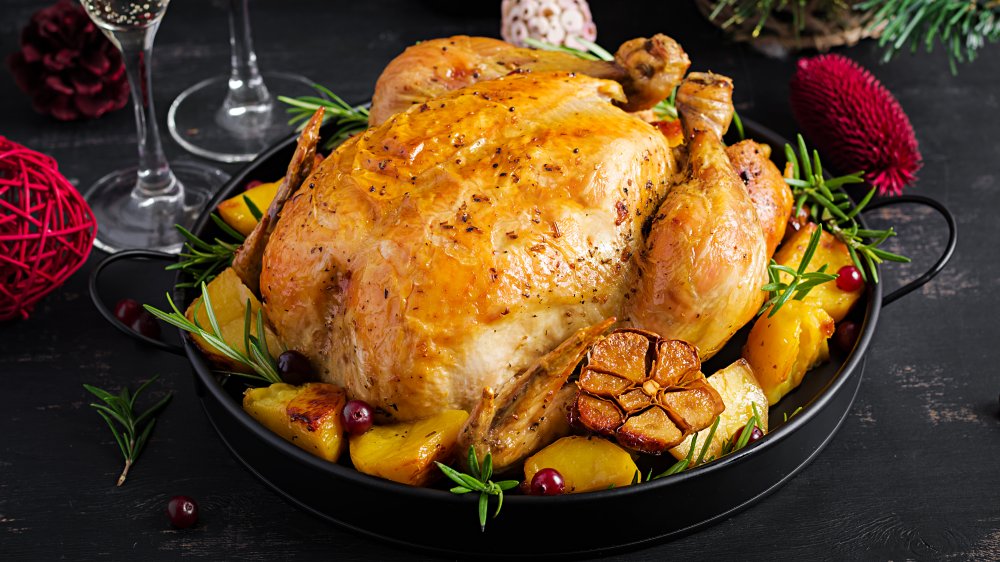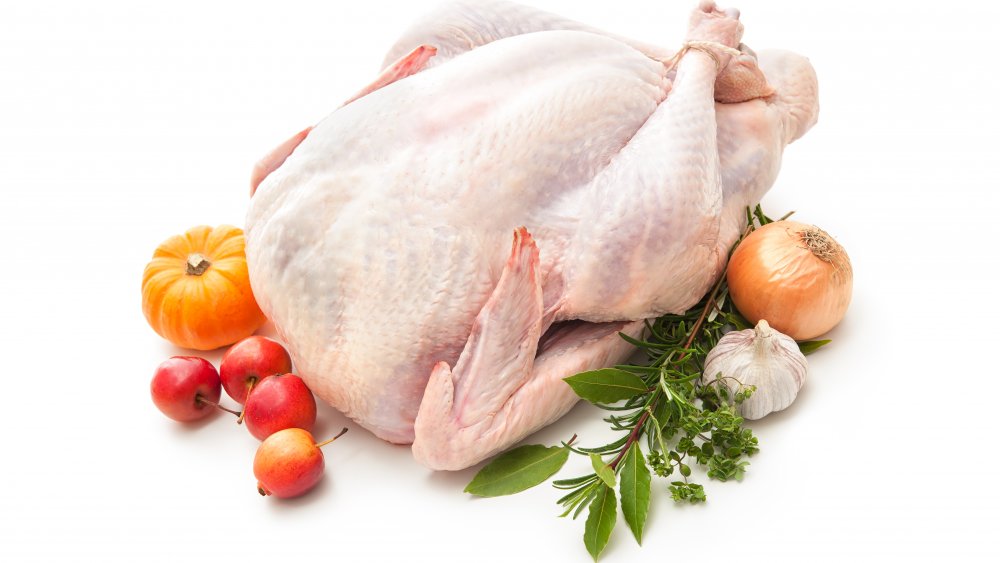Here's The Trick To Keeping Turkey Moist
Turkey is not just for Thanksgiving, contrary to what many might believe. Per Insider, we only consume about one fifth of all turkeys eaten for the year on this family holiday. According to the U.S. Department of Agriculture, Americans ate 4.35 billion pounds of turkey in 2019. While cooking up a whole turkey for the family any time of the year is kind of special, it can be a challenge to cook it perfectly. A quick internet search yields plenty of horror stories about dry turkey.
Interestingly enough, there are two camps when it comes to how to achieve moist turkey meat. There are those who think you should carve the turkey up before you cook it, and then there are those who think that's absolutely crazy. They say the real way to get a perfectly cooked, moist, and golden delicious turkey is to start by cooking it upside down. So, how do these two cooking methods stack up?
To carve up before cooking or not to carve up?
First, some cooks believe you need to cut up your bird before you even open the oven. Because dark meat on the legs cooks slower than the that of the white meat of the breast, cooking the turkey whole results in dry breast meat. How do you compensate for this disparity? The dark meat needs to be cooked until it reaches an internal temperature of 160 to 165 degrees, while the breast is done with it reaches anywhere from 145 to 155 degrees, so, the easy answer is cut it up and cook them separately (via USA Today).
However, if you cannot stand the thought of slicing up your centerpiece before it graces the table, scientist Harold McGee suggests taking the turkey out of the refrigerator a couple of hours before cooking it and putting gallon sized ice packs on the breasts. This heats up the legs and cools off the breasts. You want a temperature differentiation of 15 degrees between the breasts and the legs before you pop it in the oven (via You Tube). But, per a reader of the New York Post from Fort Meyers, Florida, both of these ideas are crazy. She suggests cooking the turkey with the breast facing down for three quarters of its cooking time and baste with butter. The reader noted that sometimes the legs will get a little brown this way, but if you put foil over them, that should solve that problem.

